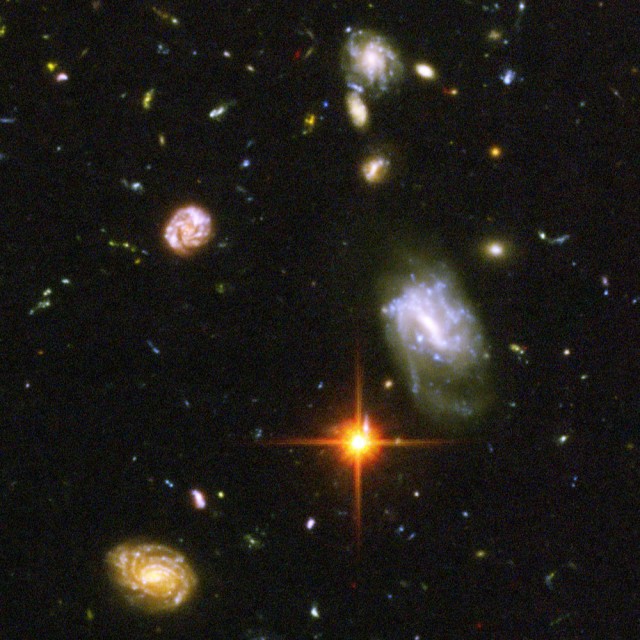Oldest galaxy yet seen forming stars 100 times faster than Milky Way
Ars Technica » Scientific Method 2013-10-28

In astronomy, there's a regular flow of oldest (and thus most distant) objects—galaxies, supernovae, quasars, and so on. In most cases, these objects are enough to make jaws drop due to the prodigious amount of energy that had to be released in order for them to be visible across most of the unknown Universe. The findings really don't tell us much until they're aggregated, however, because it's hard to infer too much about the early Universe from a single object
For that reason, I didn't pay careful attention last week when astronomers announced the discovery of the most distant galaxy yet observed, present when the Universe was just 700 million years old. But as I got a chance to read the paper over the weekend, I realized there was more to the story than just the age. Because of the method used to discover the galaxy, the researchers were able to learn some things about whether we're likely to be able to image other ancient galaxies. And the object itself has some interesting properties that suggest other early galaxies might be poised for sudden bursts of star formation.
The discovery relies on emissions from hydrogen atoms that occur when an energetic electron falls back to the ground state. One of the main forms of this emission, the Lyman-a line, starts off in the UV end of the spectrum. But as it travels across the Universe, the light becomes red-shifted. For the earliest galaxies, this red shift is so strong that the photons end up down in the infrared area of the spectrum. The authors surveyed 43 old-looking galaxies, searching for ones where the emissions were shifted the deepest into the infrared.
Read 8 remaining paragraphs | Comments




